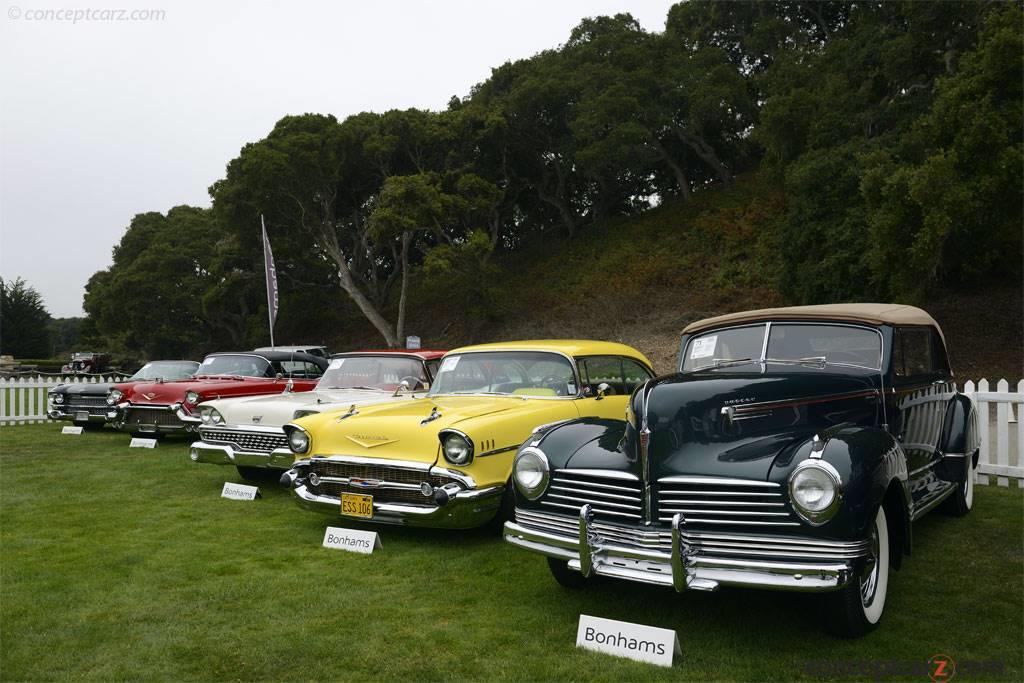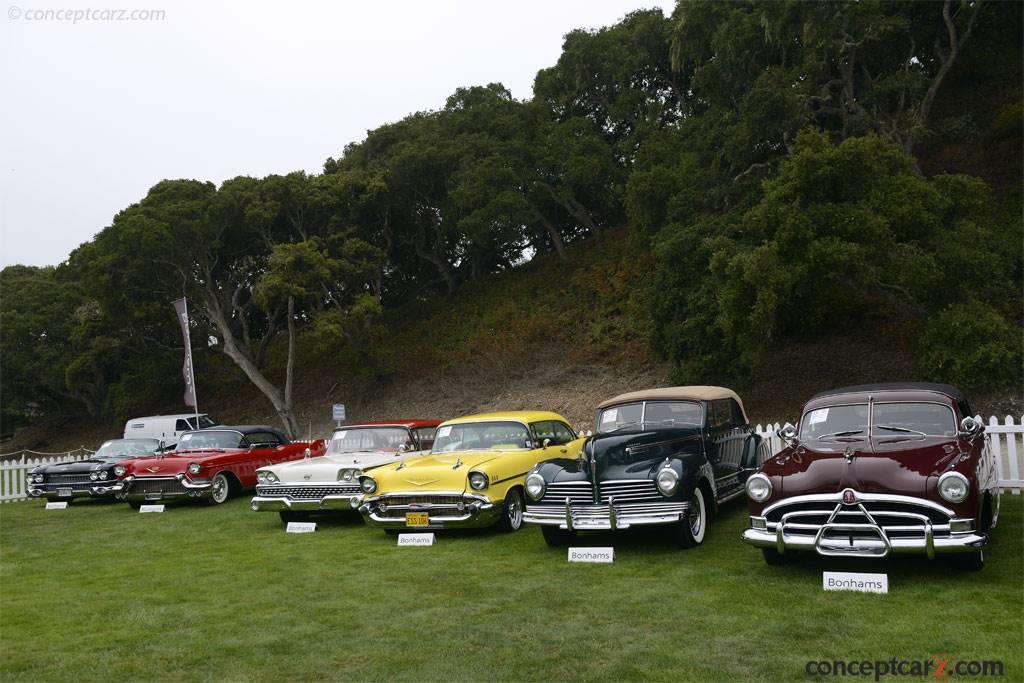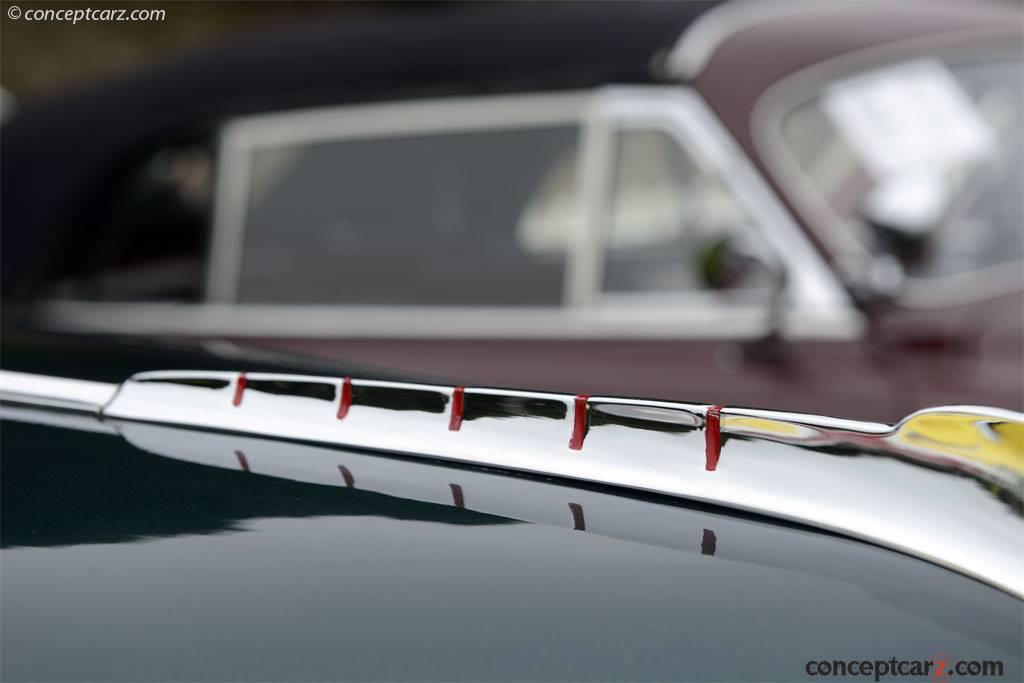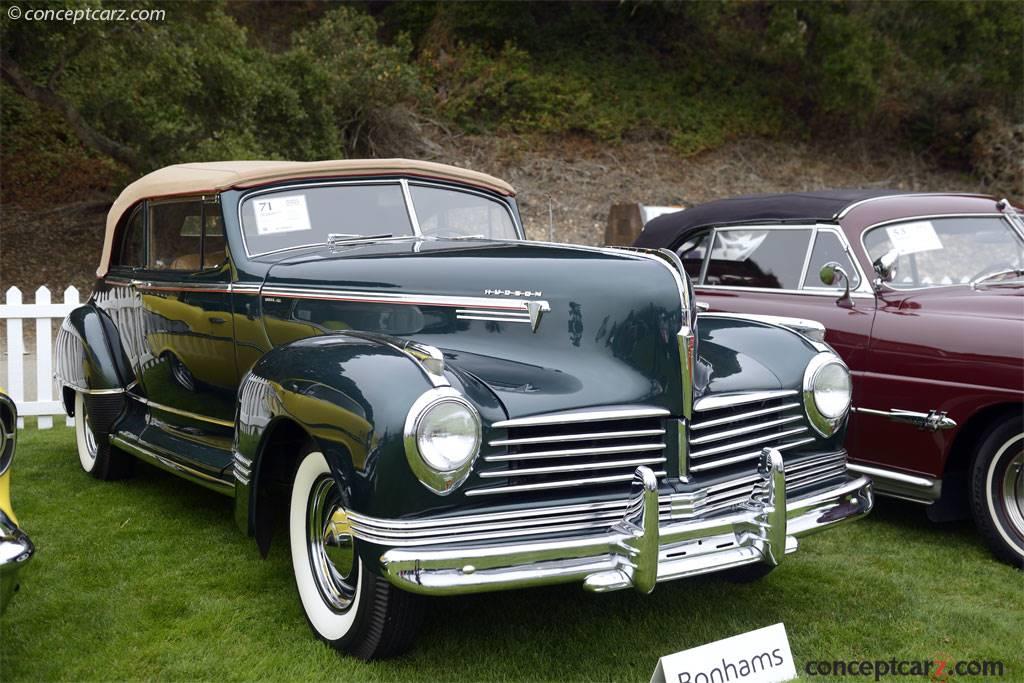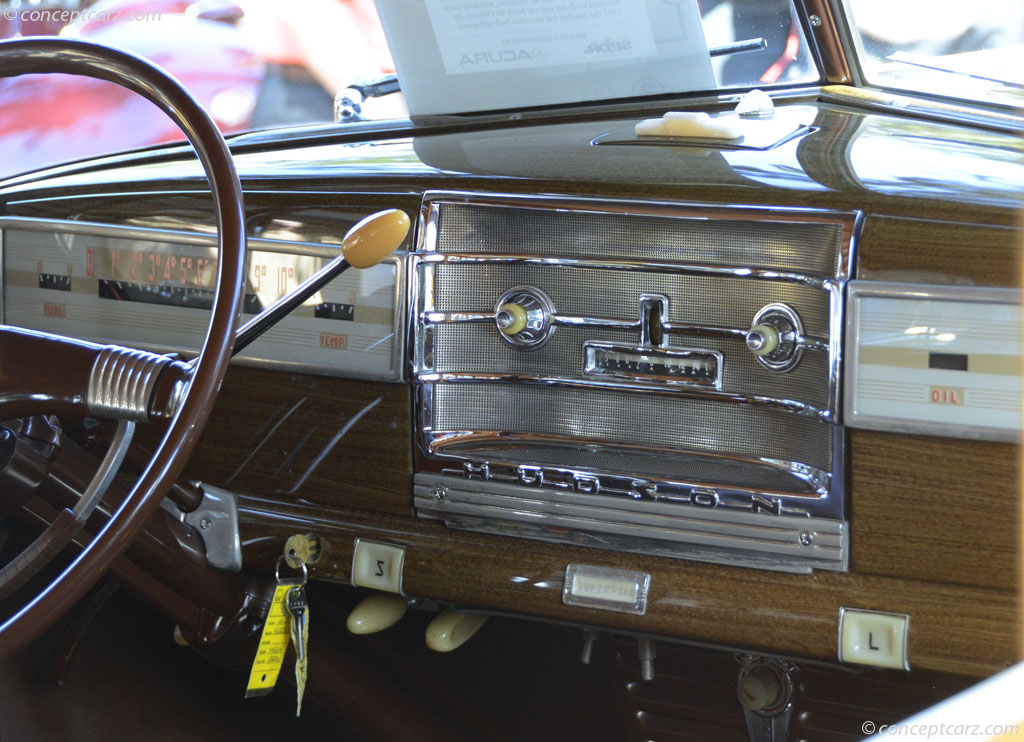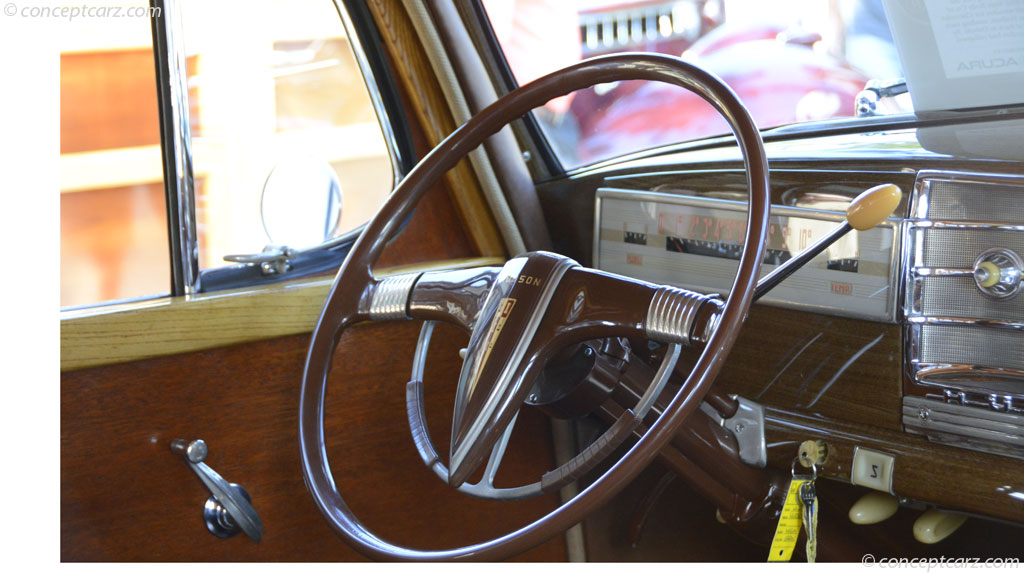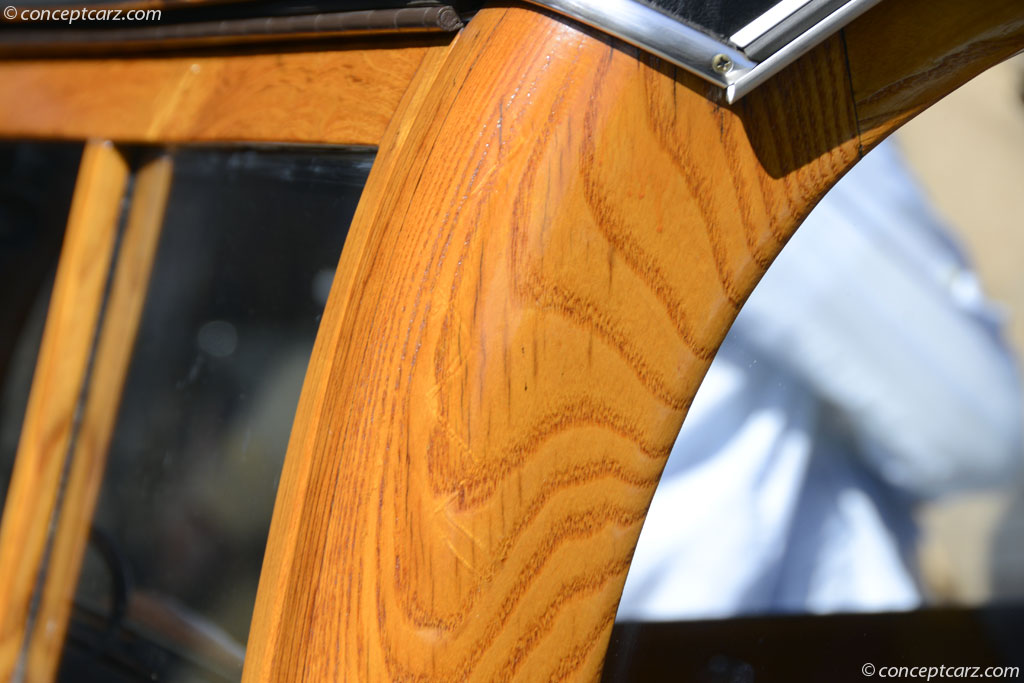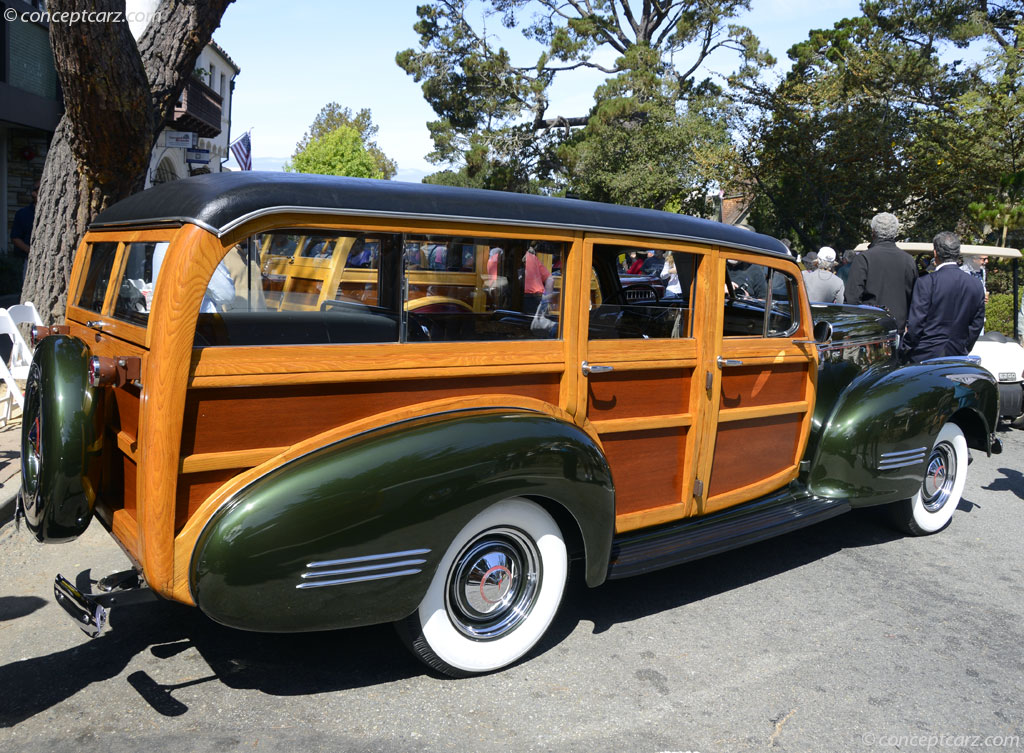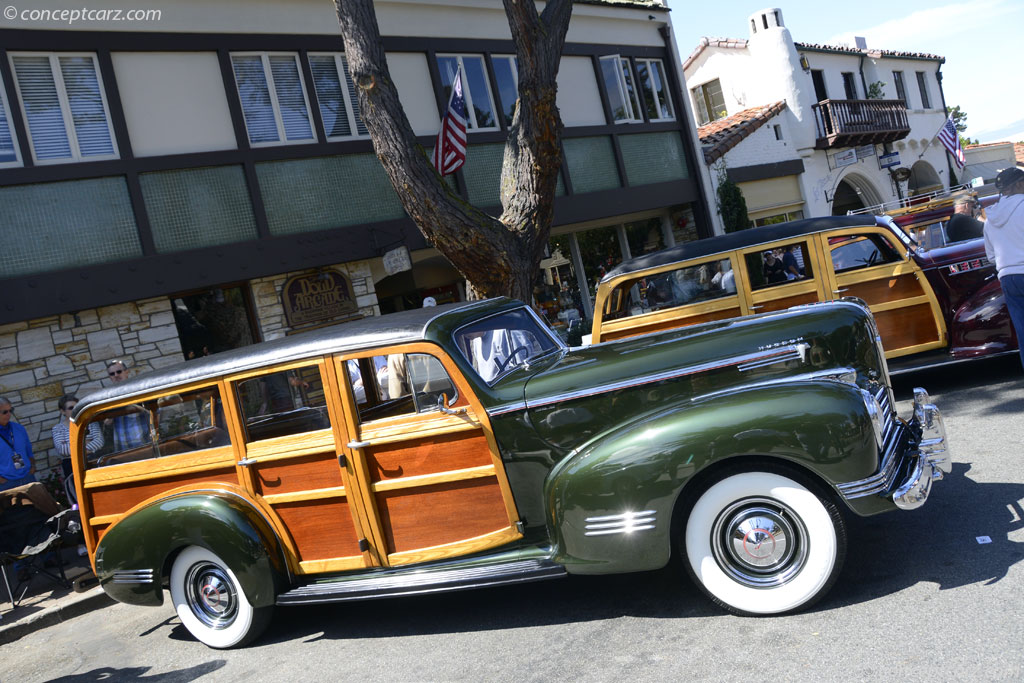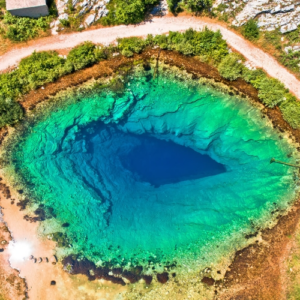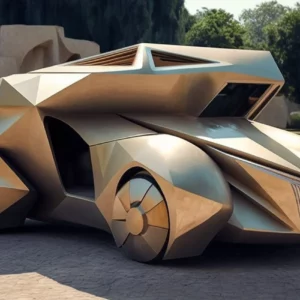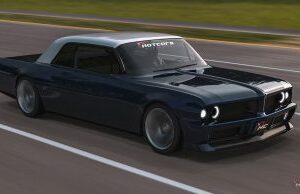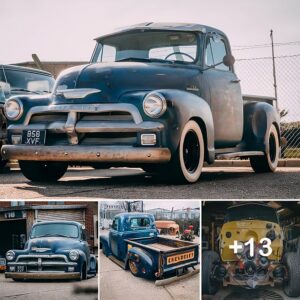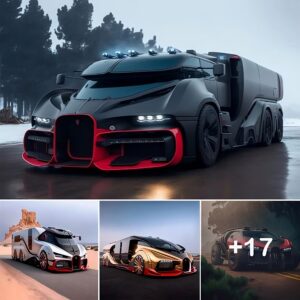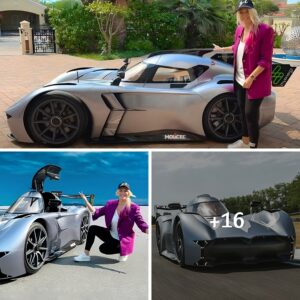The Great Depression was a very difficult time for the economy, inspiring creative tactics from many automakers to stimulate sales. Prices were reduced, the standard amenities and options list increased, and numerous incentives were offered. Hudson introduced a low-price Terraplane line meant to challenge Ford, Chevrolet, and Plymouth as the Depression continued. In 1932, the Terraplane focused on lightweight construction, weighing barely 2,000 pounds and selling for $425, a full $35 less than a Ford V8. The following year, the Essex name was dropped, and a new eight-cylinder Terraplane was introduced.
Terraplane sales continued to grow, and by 1934, they had effectively saved the Hudson Motor Car Company. The lightweight features of the Terraplane were adopted by the rest of the Hudson vehicles.
Styling was revised for the 1940 Hudson line, with the previous tear-dropped headlight design replaced by circular sealed beam units, and the grille was now a two-section arrangement with a more horizontal stance. The bodyside received additional horizontal bars, and the back gained a single-piece window. Running boards were now optional, and all models received a fully independent front suspension with coil springs, unequal-length A-arms, and hydraulic shock absorbers. In the back were semi-elliptic springs that were now five inches longer. A semi-electric Warner overdrive was now optional and replaced the Selective Automatic Shift unit. The ‘Fluid Cushioned’ automatic clutch was now offered with or without overdrive.
Four Hudson Six Travelers replaced the previous Hudson 112 Series for 1940, helping sales increase to 86,865 compared to 82,161 the previous year.
Hudson dramatically restyled their automobiles for 1941, adopting a flatter roofline that was now two inches lower while the wheelbase grew by three inches. The front horizontal grille was similar to the previous year’s design, but now had nine rather than seven grille bars, resulting in a smaller center grille divider. The rear taillights were relocated from the fenders to the quarter panels.
Hudson began offering a wider selection of interior color combinations which they dubbed the Symphonic Styling. This allowed customers to customize their vehicles to their preferences, all without increasing the cost.
In the technical department, a new three-speed synchromesh transmission was introduced with helical-cut gears, and all convertible body styles had a power top.
1942 Hudson
The 1942 Hudson model line comprised the Traveler, Deluxe, and Super Series, offered solely with six-cylinder power. The Commodore Series could be powered with either six or eight-cylinder power and was offered on 121- and 128-inch wheelbase platforms. The Deluxe and Traveler rested on a 116-inch wheelbase, and the Super Series shared its 121-inch wheelbase with the Commodore. The Traveler was priced from $830 to $900, the Deluxe from $915 to $1,200, the Super from $1060 to $1,415, and the Commodore from $1,115 to over $1,225.
The six-cylinder, L-head engine powering the Super Series 21 and the Commodore Series 22 had a 212 cubic-inch displacement, three main bearings, mechanical valve lifters, a Carter Duplex Downdraft carburetor, and developed 102 horsepower at 4,000 RPM. The six-cylinder engine in the Traveler Series 20-T and the Deluxe Series 20-P displaced 175 cubic inches, had a chrome alloy block, three main bearings, a Carter single downdraft carburetor, and developed 92 horsepower at 4,000 RPM. The L-head eight-cylinder engine was a 254.4 cubic-inch unit with five main bearings, mechanical valve lifters, a two-barrel downdraft Carter carburetor, and developed 128 horsepower at 4,200 RPM.
All engines were backed by a standard three-speed manual transmission with a single disc clutch with cork inserts, running in oil, and steering column controls. A Drive-Master transmission and overdrive were optional. Stopping power was courtesy of Bendix hydraulic drums on all four wheels.
Automobile production in 1942 was shortened due to the United States’ involvement in World War II. Hudsons were in production through February 5th of 1942 (production began on July 21st of 1941) when civilian production ceased, and the factories were converted to help support the war effort. This meant that just 40,661 examples were built for the model year, considerably less than the 79,529 units built the previous year.
Styling was substantially updated for 1942 as the entire industry embraced the new and modern design, with streamlined styling, a lack of running boards, integrated headlights, smooth lines, and wraparound headlights. Hudson flared out the lower body section where the running boards used to reside, adding a full-length bodyside trim treatment, and gave the front a wide and prominent full-width grille. The overall height was lowered by 1.5 inches due to the frame design and changes to the rear springs.
Vehicles stopped receiving chrome trim on December 31st of 1941, except for the bumpers, as those resources were needed for other applications. Many within the industry compromised by substituting the chrome trim with plastic.
Hudson proudly described their 1942 vehicles as ”America’s Safest Car,’ built to serve better, last longer and cost less.’
Station Wagons
Hudson was not known for their station wagons. Their early wood-bodied cars were created by outside contractors, such as J.T. Cantrell, and done on a per-client basis. The first wagon in the company catalogs appeared in 1936, where it was listed as a ‘Business Car’ in the Terraplane line. The early Hudson wagons were bodied by Baker-Raulang. From 1937, most of the work was handled by the U.S. Body & Forging Co. of Indiana. By 1939, a wagon appeared in Hudson’s entry-level 112 series.
The Wagon would become a stronger part of the Hudson line-up during the 1940s. A long-wheelbase Bid Boy sedan was substituted for a station wagon in 1940. The following year it moved up-market to the mid-sized segment, where it was built atop a 121-inch wheelbase, offered as a Super Six or Commodore Eight.
The wagons were certainly growing in popularity, as were the wooden bodies that were first seen many years earlier on ‘Depot Hacks.’ Wealthy estates often owned one or many station wagons as work vehicles for their gardeners and staff. Thus, over the years, the wagons became a sign of prosperity and a symbol of high society.
Many surviving Hudson wagons carry maker’s plates from Mid-State Body Company of Waterloo, New York.
In 1942, the only model line offering a station wagon body style was the Super Six. Production continued for a short time, ending in February, as all automobile production ceased to focus on supporting the Second World War.
When production resumed in 1946, only six wagons were built for company use. It is believed that none have survived. A station wagon would not appear again in the Hudson model-line until 1955; it was a rebadged Nash Rambler.
